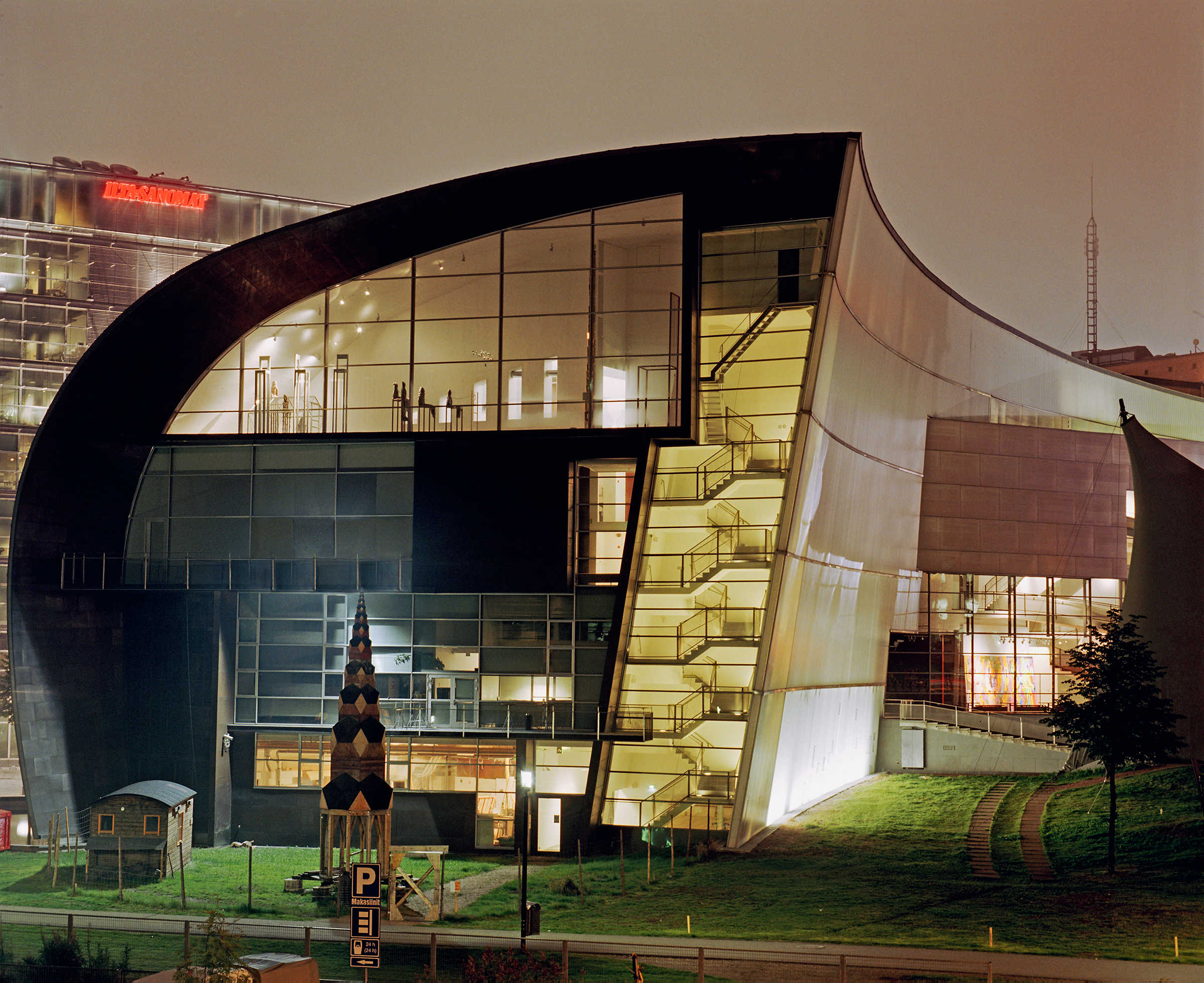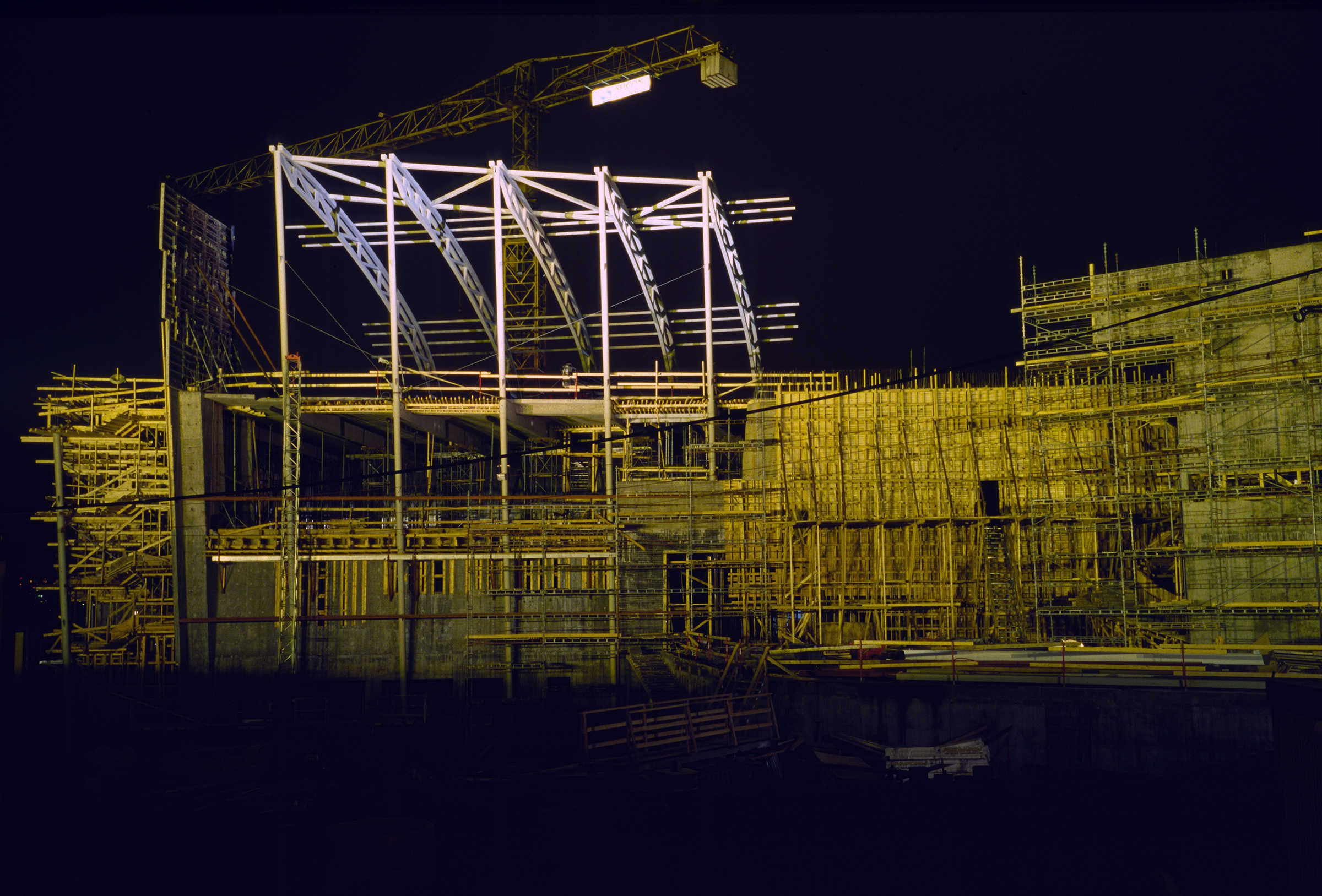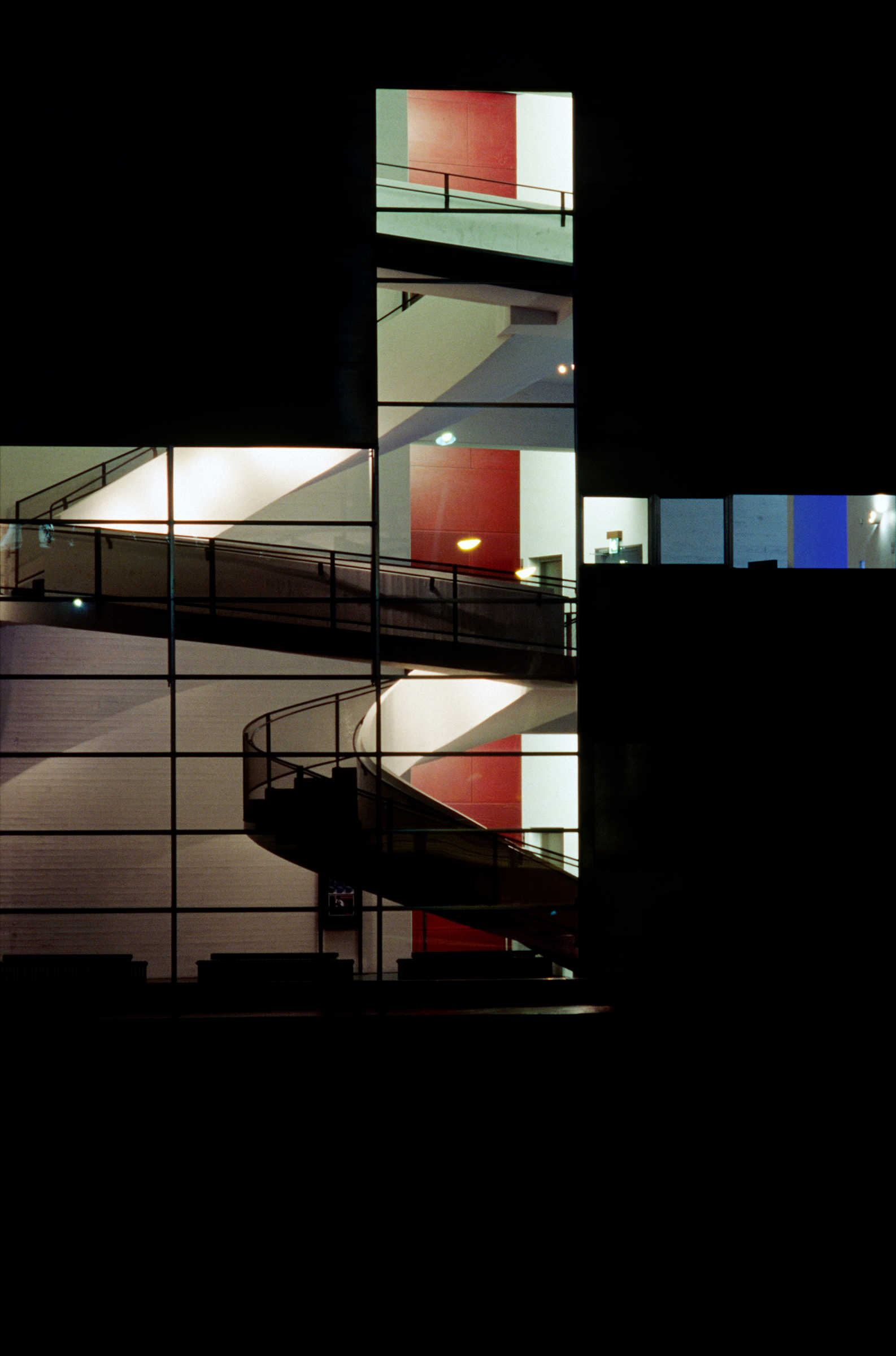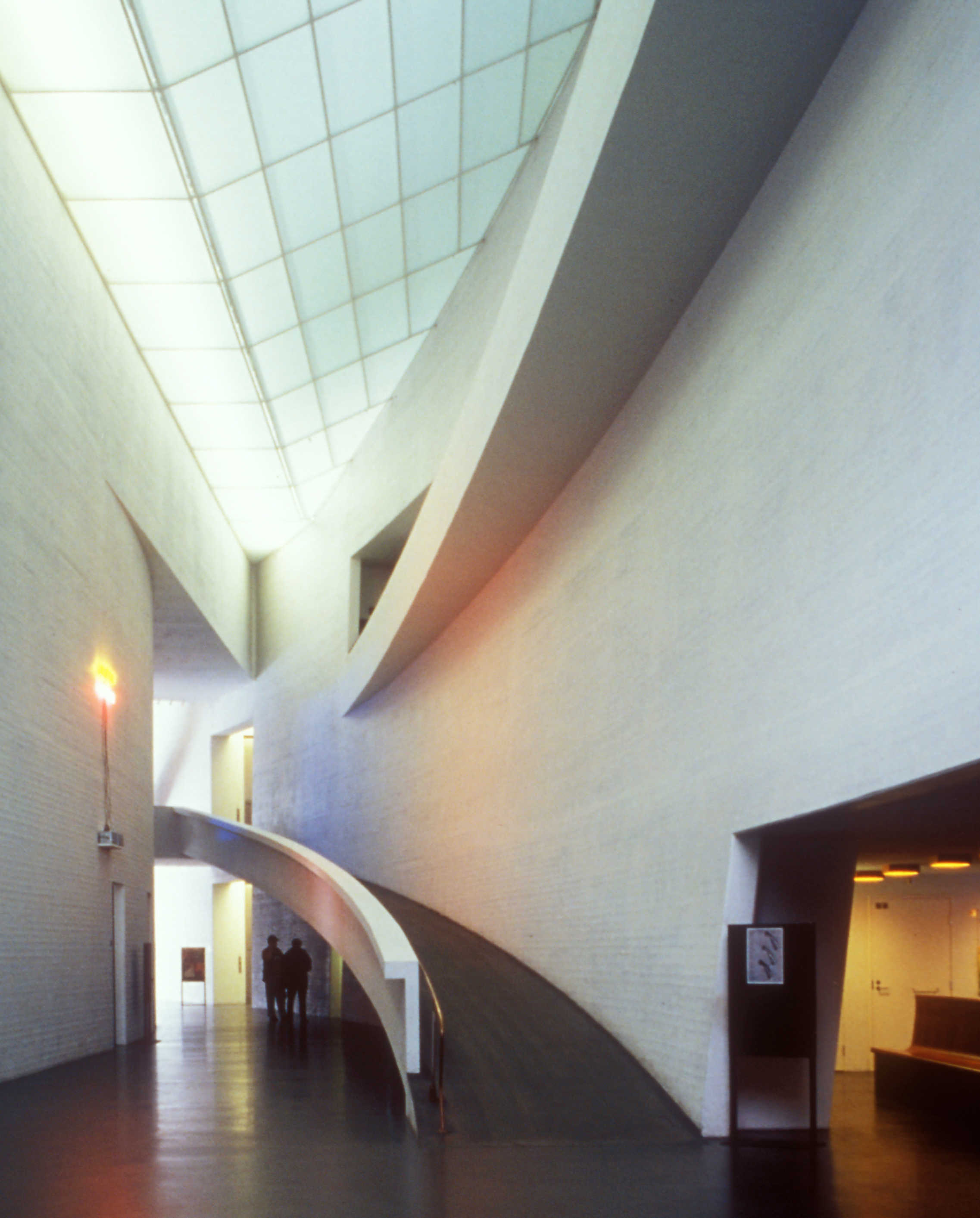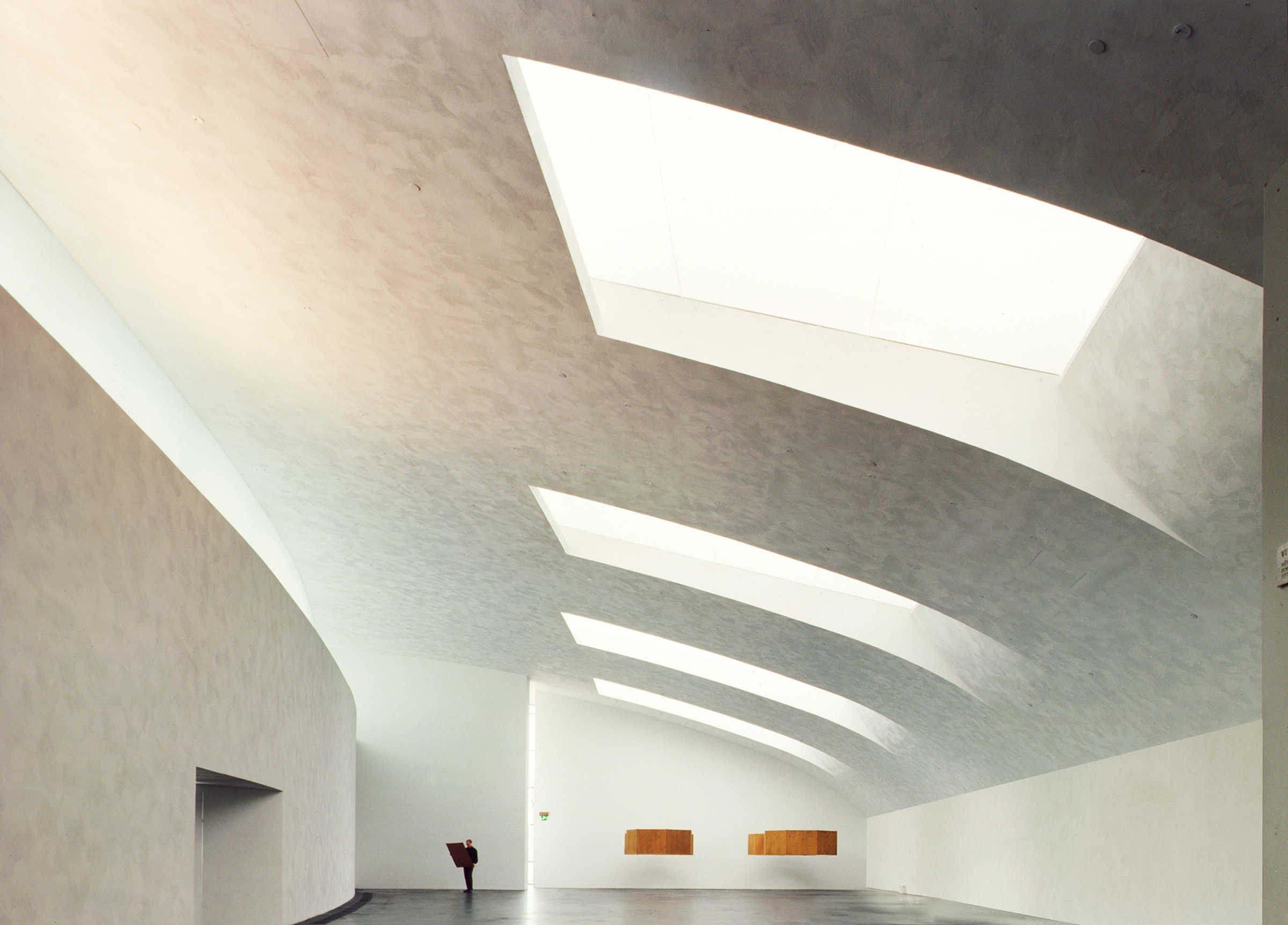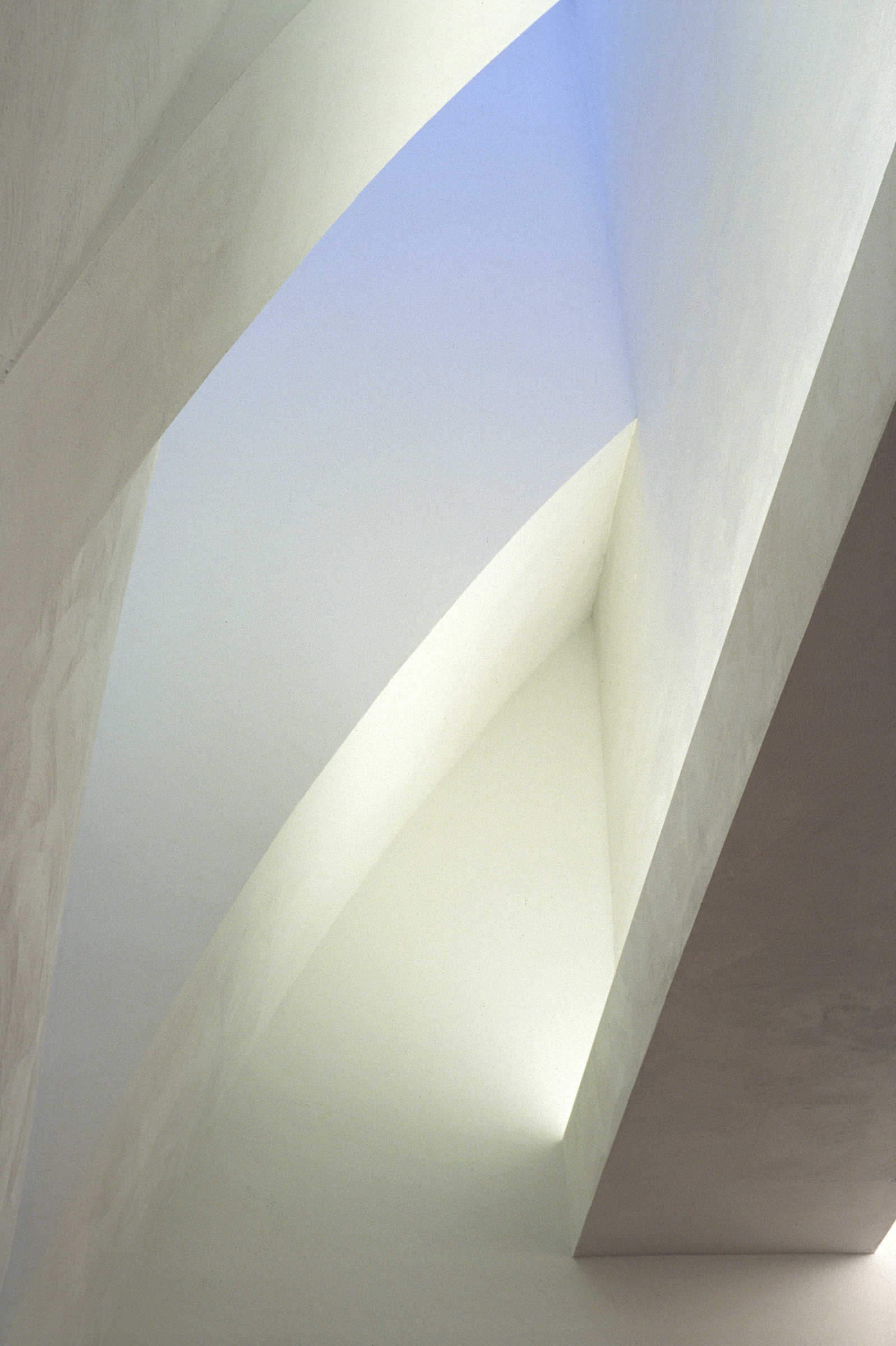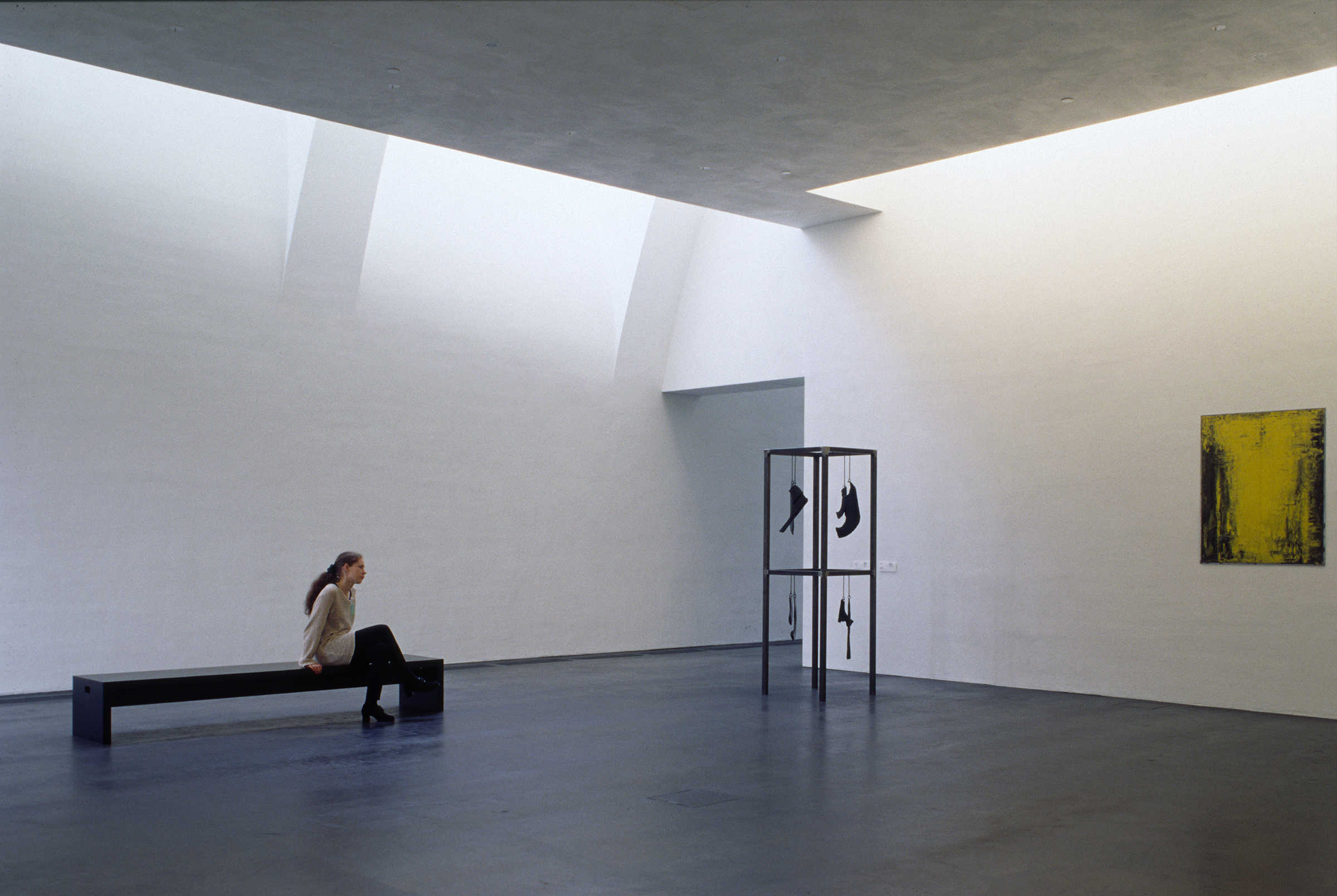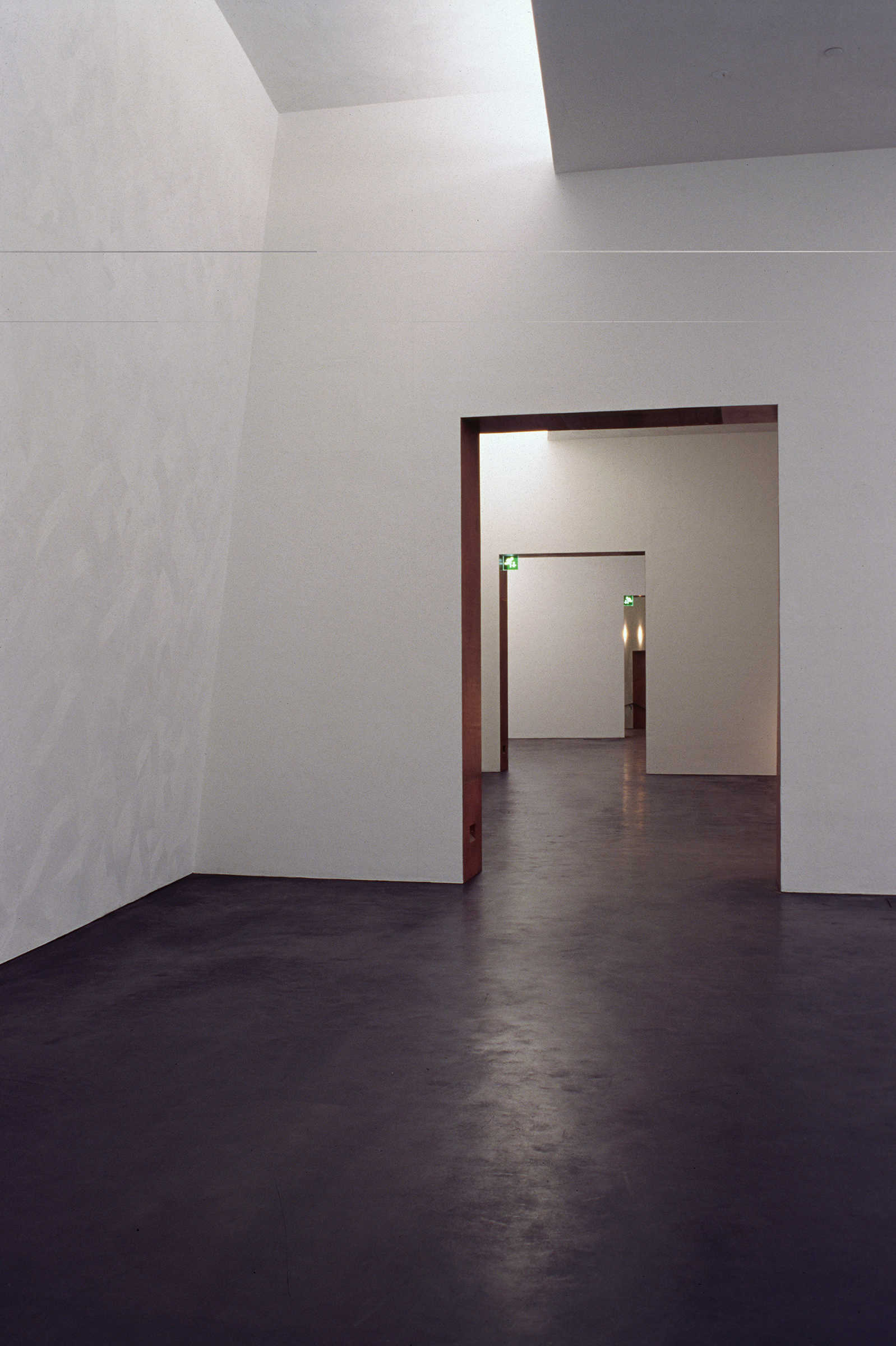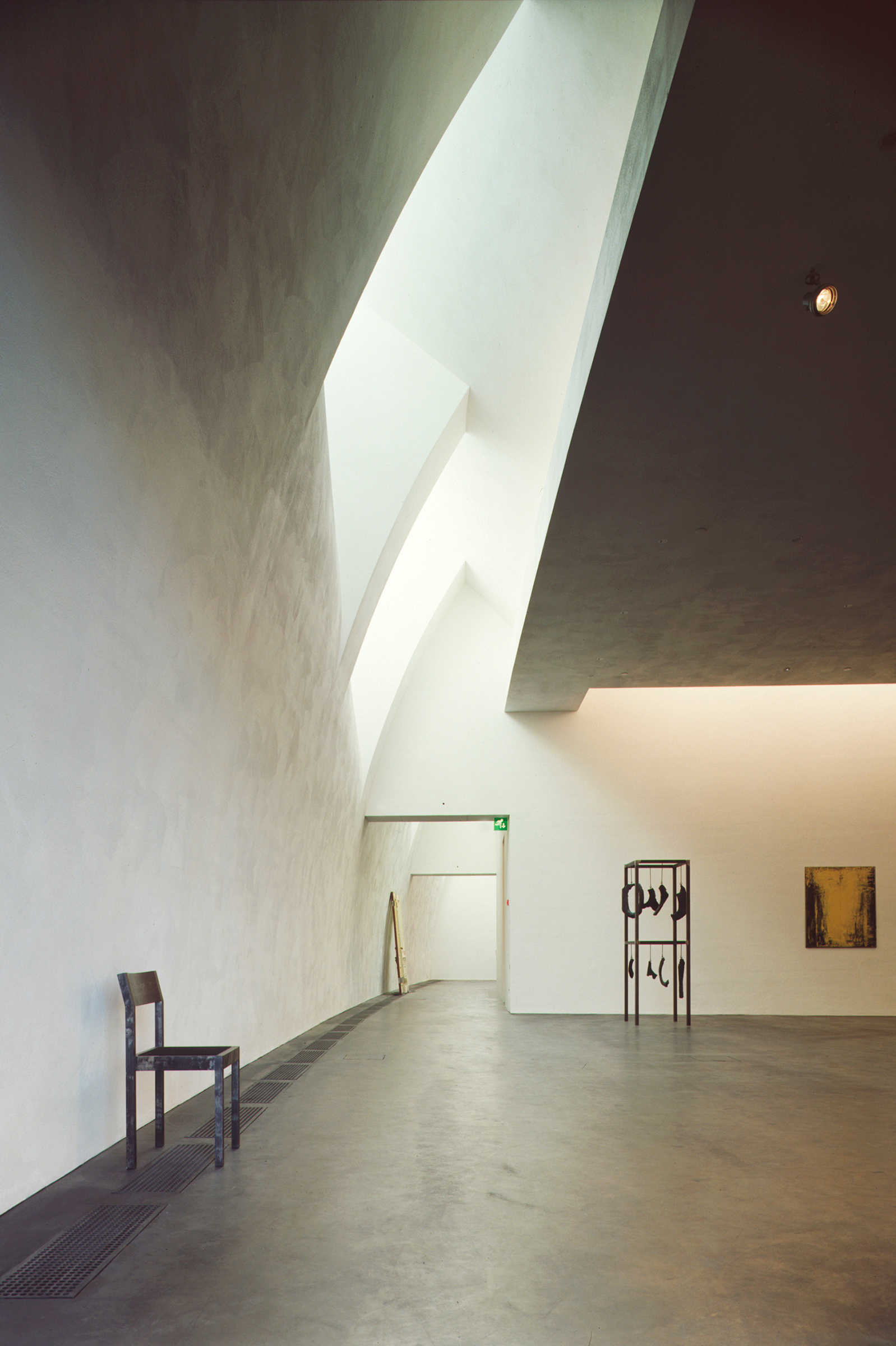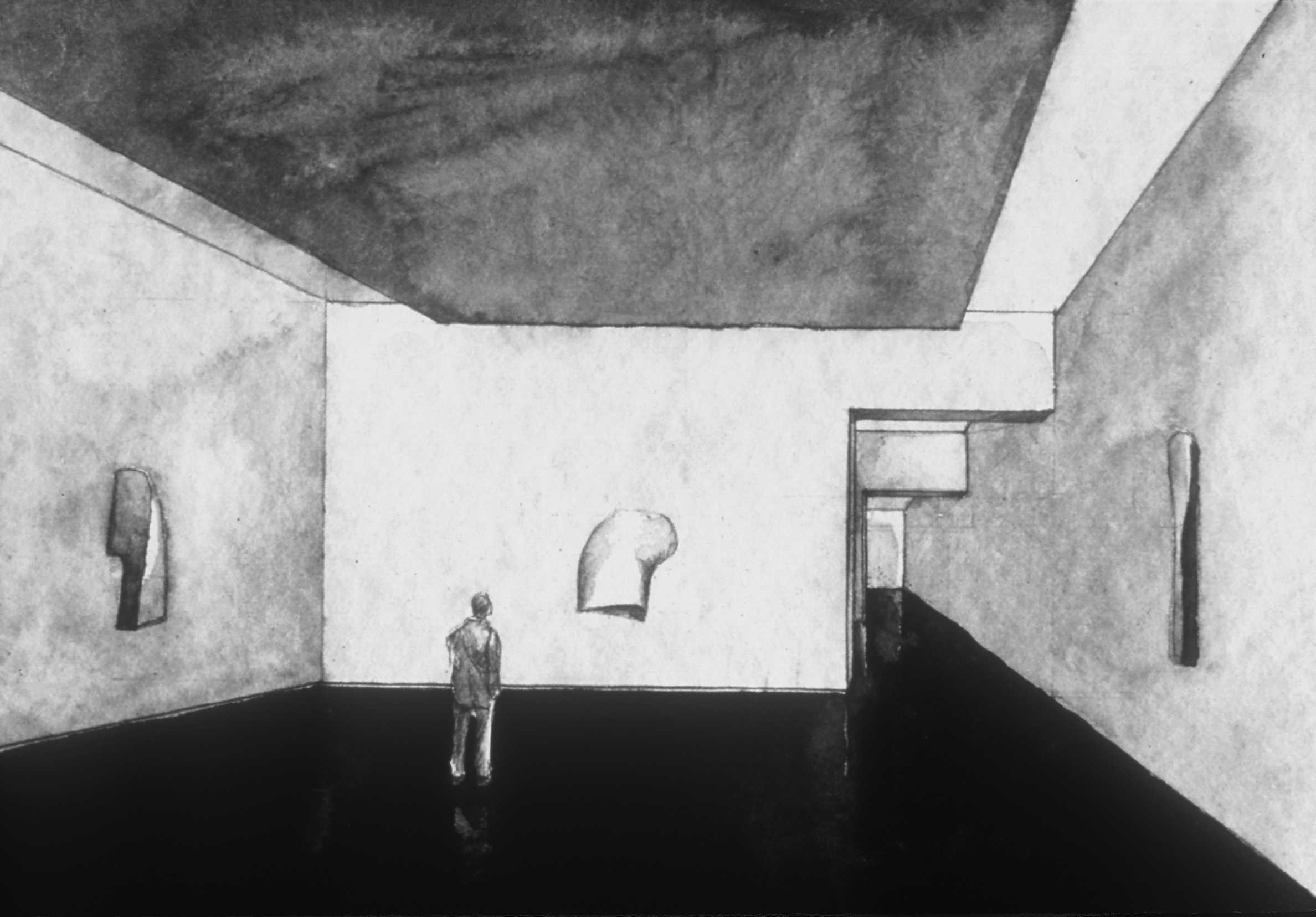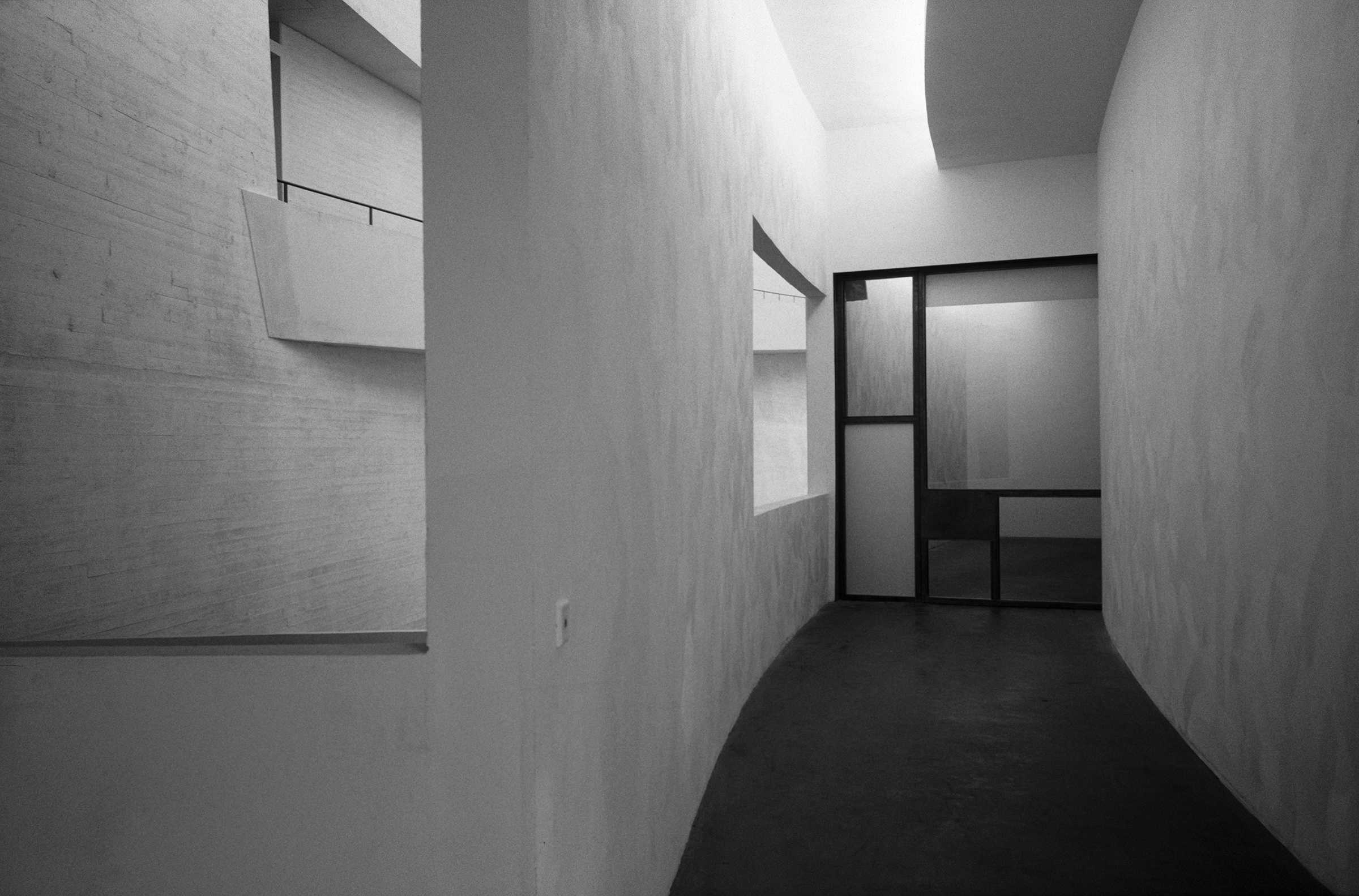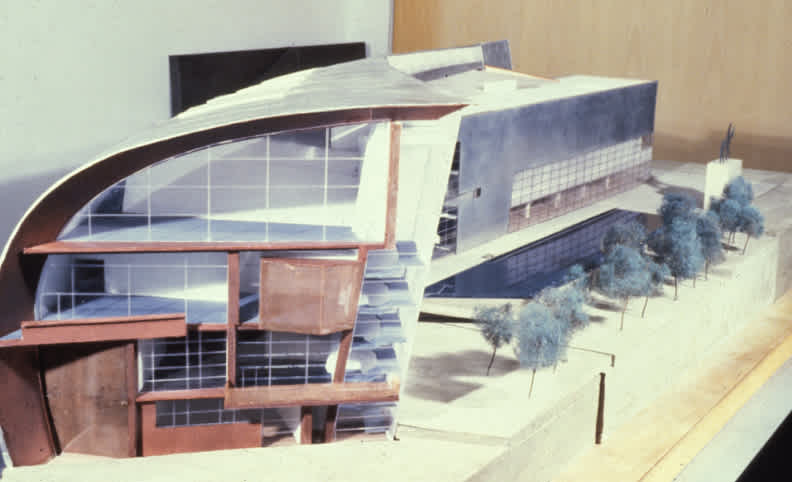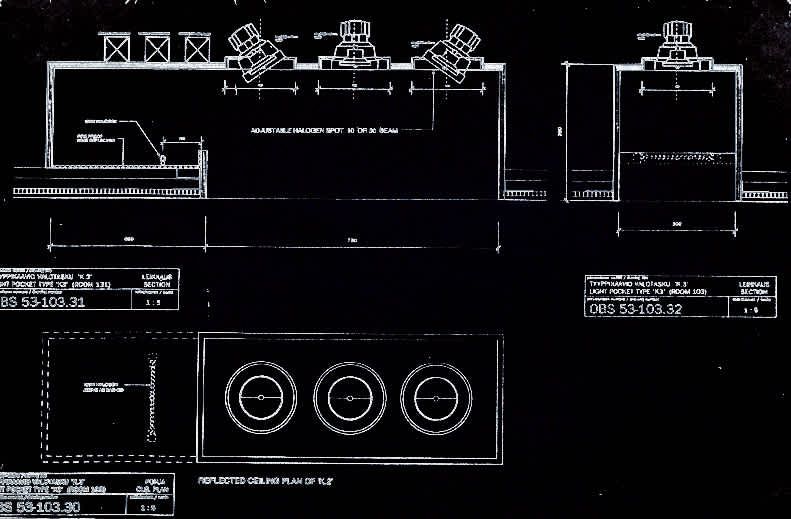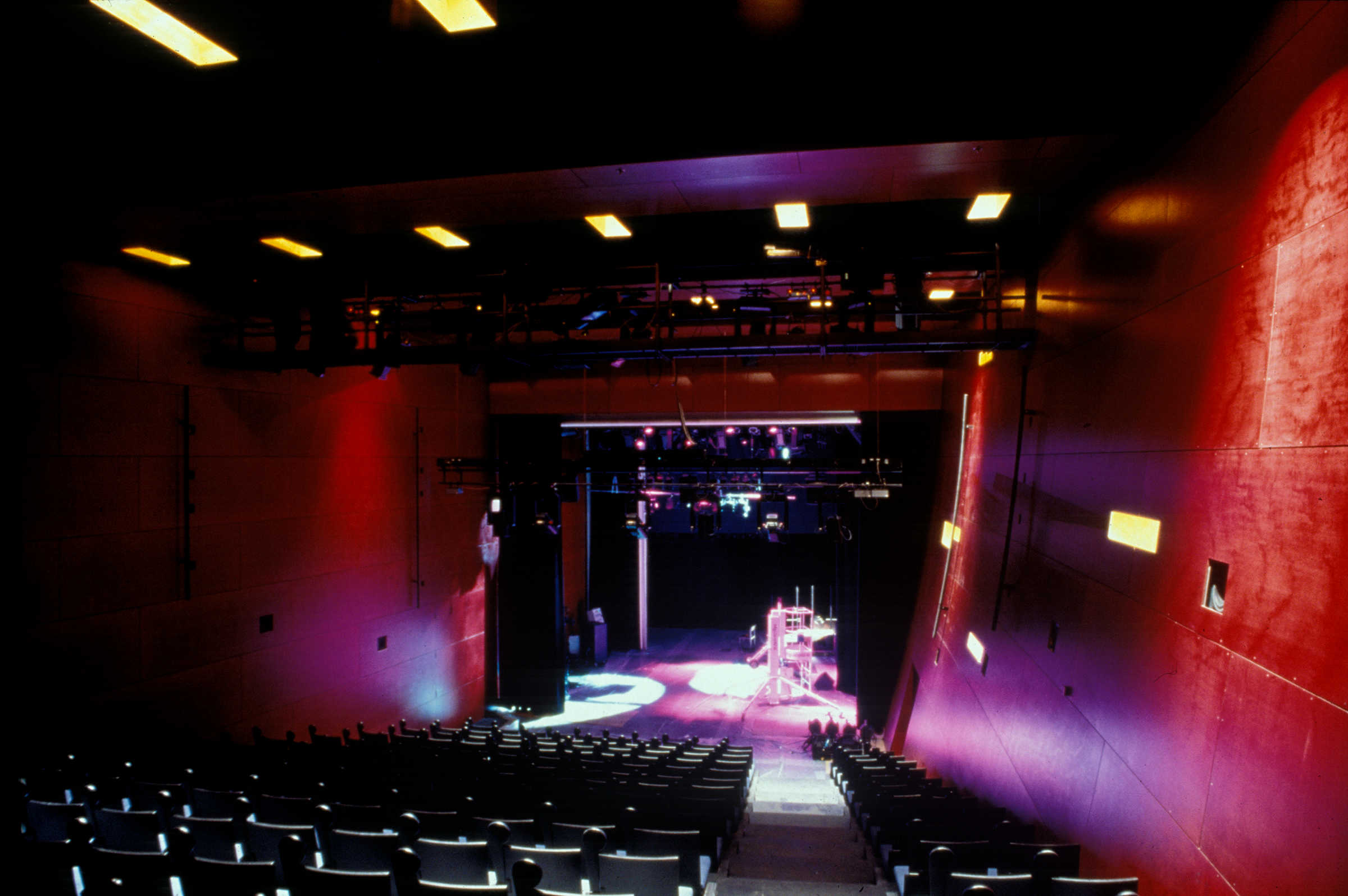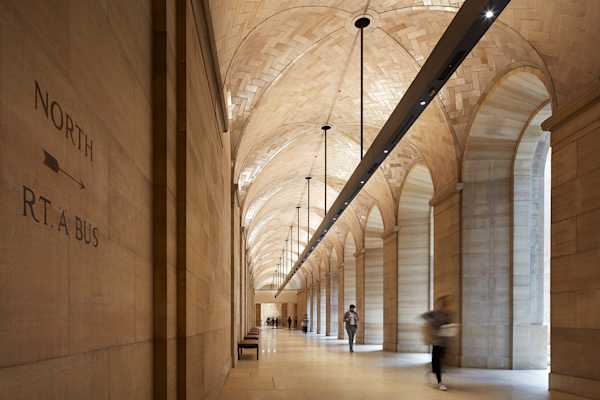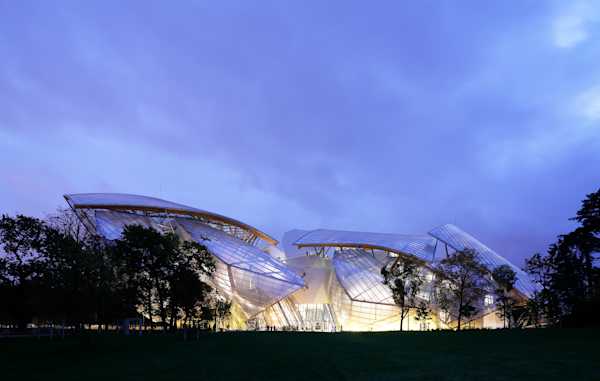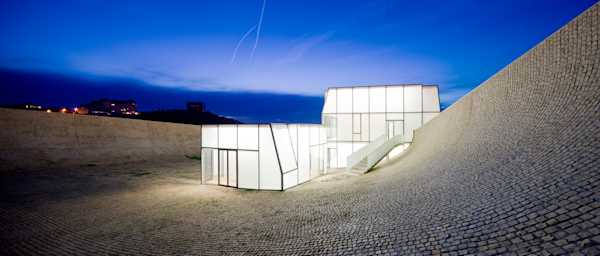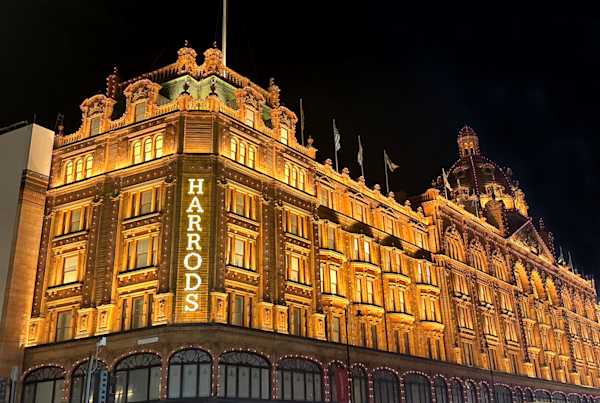The Kiasma Museum of Contemporary Art was founded in 1990 for the purpose of both popularizing and raising the status of contemporary art in Helsinki. The museum exhibits the contemporary art collection of the Finnish National Gallery, as well as organizes changing exhibitions and augments its collection.
The word “chiasma” refers to a crossing of two tracts, such as nerves or chromatids. According to Steven Holl, the “concept of Kiasma involves the building's mass intertwining with the geometry of the city and landscape, which are reflected in the shape of the building."
Holl explains that he “considered the range of contemporary artwork and tried to anticipate the needs of a variety of artists, including those whose works depend on a quiet atmosphere to bring out their full intensity.” To maintain this quiet, the galleries had to be free of clutter, meaning most light fixtures had to be hidden in the architecture. Light pockets in the ceiling provide uniform wall illumination, and the ambient light in the gallery spaces achieves a general lighting of the neutral walls with an imperceptible light source. The artificial lighting was designed to blend with and complement the daylighting without being obtrusive. A few removable spots were placed in strategic locations not just to allow not flexibility for lighting temporary exhibits but also to create accentuated contrasts and add relief. In the public spaces, visible lighting fixtures were employed to offer a contrast with the objectless lighting in the galleries.
L'Observatoire International provided the lighting design for the facade and all interior public spaces
Architect
Steven Holl ArchitectsLocal Architect
Juhani PallasmaaSize
130,000 ft2 / 12,077 m2
Status
CompletedDate Completed
1998
Press
Principal
Photo Credit
Benoit Pevelli
Timo Kiukkola
Paul Warchol
Steven Holl
L'Observatoire International
